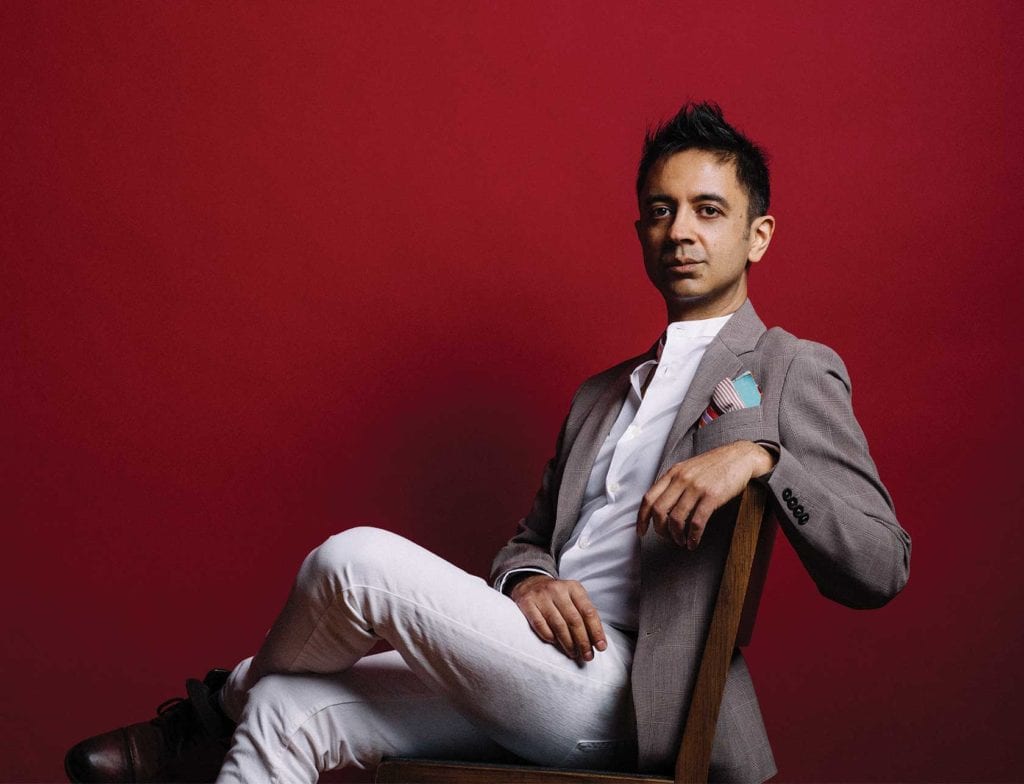
Pianist, composer, and Harvard professor Vijay Iyer is unique for being both an award-winning musician and a cognitive scientist. In musical venues as well as classrooms, Iyer continues to excite and challenge audiences with more than ideas. While his new album is called “Uneasy,” and aims to add to the conversations taking place about racism and injustice, it also has a rendition of Cole Porter’s classic, “Night and Day.” And while Iyer draws deeply on African American traditions, his family’s Indian heritage is part of his approach to making music that, by intent, is not categorical. He is jointly appointed as a professor in the department of music and the department of African and African American studies at Harvard. The Banner caught up with this multi-talented artist from his home in Harlem, New York City.
Banner: “Uneasy” is your latest album, released this April. From politics to Cole Porter … Can you say a few words about it?
Vijay Iyer: The simple answer is that these are uneasy times. The longer answer is that living in the United States is about conflict, oppression and pain. Jazz and Black music have always related to those conditions. And in my life, I’ve been mentored by elders, people such as Amiri Baraka and Roscoe Mitchell — all visionary Black radicals and artists. Maybe the title of my album is a reminder that though the music might soothe soul or offer comfort, it all takes place within the context of oppression and pain.
Tyshawn Sorey and Linda May Han Oh are part of your trio. You’ve worked together a long time. Tell us about the collaboration.
I’ve known Tyshawn for about 20 years, and Linda since 2011. We’ve worked scattershot, here and there, and in 2019 we had the chance to perform as a trio. We synchronize well, and build something together. It was in 2019 that it really came to life for us as a trio.
You’ve been in the music faculty at Harvard since 2014. What’s that like?
I teach undergraduate and graduate courses, serve as an advisor to Ph.D. candidates and mentor students. I was hired with tenure, and was the first senior faculty member of color in the music department. It was because of Drew Faust, then the President of Harvard, that the job existed; she created a primary focus on the arts.
“Open City” was one of your prior pieces, inspired by the book of the same name by Teju Cole, the Nigerian American writer. What resonated for you in that book?
First of all, I’ve known Teju for close to 20 years, well before he was known as a writer. We lived in the same neighborhood and ran into each other often. We found ourselves going to the same concerts, and on the subway rides would shoot the breeze. When we met, he was a graduate student in art history at Columbia — we’re talking the early 2000s. So he handed me his book and said, “Let me know what you think.” I came to know him as an artist. His novel, “Open City,” gave me a feeling of being in New York that I didn’t often encounter in books: the encounters of the narrator of color with others of color. The city is larger than the mythology of itself, and contains all these trajectories outside, in the world. This is an open city!
You have an interdisciplinary Ph.D. in the cognitive science of music from the University of California, Berkeley, and your dissertation is titled, “Microstructures of Feel, Macrostructures of Sound: Embodied Cognition in West African and African-American Musics.” On your website, you describe it as “a body-based view of music cognition.” Is there a connection between your academic work in cognitive science and your work as a musician?
Yes, in the sense that I was able to embark on that project because of my work as a musician. The awareness of West African, European, Afro-Caribbean, South African, and Black music in the United States — that’s what made it possible. It was intervention in that I was trying to inform the community of science that something very important was missing in their concepts. I was reintroducing the intelligence of embodied experience. How can I make music that invites movement? Feeling that movement.
Your parents were immigrants from India, and you’ve said, “My relationship to America is as much about being brown as it is about being Indian.” Are there traditions from India that have a bearing on your work? For example, your 2014 release of “Radhe Radhe: Rites of Holi.”
All of my music, since I first started a quarter of a century ago, and not always overtly, is there in the structure, in particular rhythms and time forms — it’s in the bones. I’ve also collaborated a lot with musicians from South Asia, and continue to think about their melodies and harmonies.
What’s up for you in 2021?
I’ve got a show in Prospect Park in Brooklyn on August 14. Celebrate Brooklyn has commissioned a new work, which I’ll premiere at the concert.







